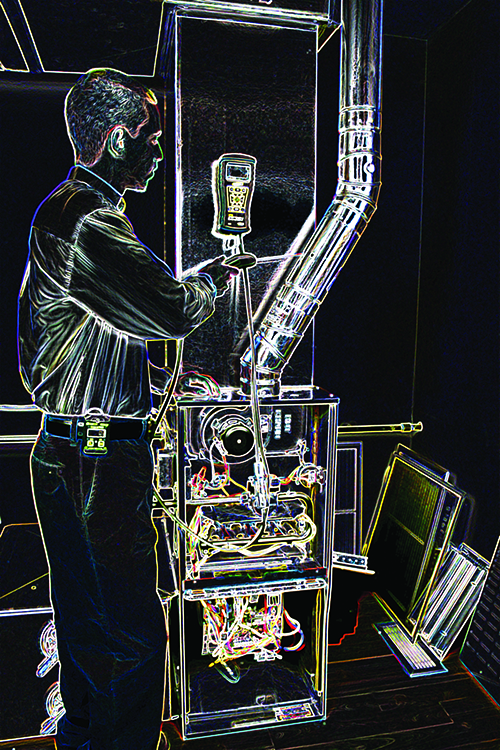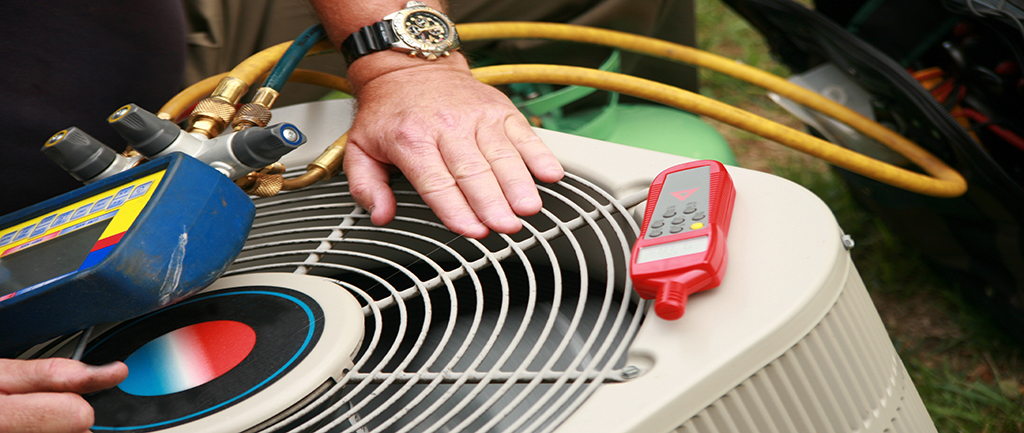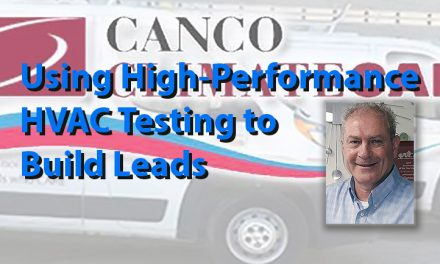
Casey Contreras
If you are not adding performance into your service agreements- you could be missing a huge revenue stream. But first, your technicians must understand the importance of service agreements, particularly focused on performance.
Typical service agreement jobs include cleaning the condenser coil, checking capacitors, contactors, and compressors. They also include inspection of evaporator coils and heat exchangers. Technicians check the refrigerant charge, change filters, and complete their check sheet giving the homeowner a thumbs-up. But is that enough?
Who Benefits the Most?
Ideally, everybody should benefit. Homeowners win if the agreement keeps their systems running smoothly, efficiently, and safely. Technicians benefit, because a strong service agreement base provides constant work for them year-round. And contracting companies benefit because service agreements bring in a constant revenue stream and tie customers closer to them.
But everything is not ideal. Many service technicians misunderstand how much revenue they should produce. This can lead to poor attitudes and a ‘wrong’ mindset.
For an example, when I was a service technician performing maintenance calls, my biggest complaint was that I couldn’t make any money. I thought service agreement calls were a waste of my time, so I would blaze through them as fast as I could to move on to the next job.
My typical day consisted of four service agreement calls. I figured I was making about $25 per service agreement, which totaled $100 for the day. During slow periods I made roughly 50% less than I often made during busier times. This was based on doing those mind-numbing checklist agreements I referred to earlier.
Unfortunately, I was not alone. Today I hear similar complaints from other technicians who share the frustration I once felt. These grumblings might be occurring within your company as well.
From a business standpoint, we all understand the need to be profitable. On some level technicians know the company also needs to be competitive. By pricing service agreements slightly higher or lower than the competition, no one gets rich. The idea is that service agreements keep our companies top-of-mind with customers when there is an equipment issue.
 The Costs of Service Agreements
The Costs of Service Agreements
Here is what most techs don’t think about: the costs for performing service agreement work. Typically the company pays for:
- Someone to sell the maintenance: usually a Customer Service
Representative (CSR) or a Technician - Phones for CSRs
- Technician vehicles and tools
- Insurance for vehicle
- Fueling vehicles
- To maintain vehicles
- Technicians for the job.
The list goes on, but you get the idea.
A Look at Performance
Let’s convert these checklist-style service agreements into performance agreements and introduce a new approach to every service call. All you need is to add static pressure measurements to your existing service procedures. It typically takes no more than five minutes to perform the test, and the issues you will discover will lead to more opportunities. You no longer must wait for equipment break downs.
For this to happen, technicians need to install four test ports: entering the filter, exiting the filter, entering the coil, and exiting the coil.
Add the exiting filter pressure to the entering coil pressure. This provides Total External Static Pressure (TESP) and lets you know if airflow restrictions exist.
To discover the source of any restrictions, add in the following pressure measurements. The highest pressures indicate the most restriction to airflow.
- Find filter pressure drop by subtracting the entering filter pressure from the exiting filter pressure
- Find coil pressure drop by subtracting the entering coil pressure from the exiting coil pressure
- You can determine return duct pressure with entering filter pressure
- Exiting coil pressure also doubles as the supply duct pressure.
 Solutions Based on Measuring
Solutions Based on Measuring
With a performance-based approach, technicians can discover invisible issues that have plagued customer comfort for years. When static pressures are high, they tell us we need to renovate (make a bigger opening). Static pressure profiles help determine what needs to be renovated.
For example:
- When filter pressure drop is high, increase the filter surface area or install a less restrictive filter
- If coil pressure drop is high, clean the coil or increase the coil size
- Is supply duct pressure is high? Then add more supply duct capacity
- When return duct pressure is high, increase return duct capacity.
These airside renovations are called ‘Air Upgrades.’ You won’t find these defects unless you measure.
Communication
 Another aspect of Performance-Based Agreements is communication. Technicians need to present the information to customers without getting technical. Explanations must be in terms the customer can understand. There are many resources available to help technicians with this.
Another aspect of Performance-Based Agreements is communication. Technicians need to present the information to customers without getting technical. Explanations must be in terms the customer can understand. There are many resources available to help technicians with this.
For one, they can download the Airmaxx app for their smartphones. This app puts the measurements in colored scales that helps customers see what components are in a poor operating state. Almost everyone will understand green means good, and red is bad. You can take it a step further and compare static pressure to blood pressure. Anyone who has visited the doctor’s office understands the importance of proper blood pressure.
For example, say you measured TESP at .82-in wc. and the system is rated for .50-in wc. You could say, ‘Mrs. Smith, measuring static pressure on your HVAC system is like a doctor measuring your blood pressure.
‘I measured a .82 on your system, that is considered high. If your doctor measured your blood pressure that high, you would be in stage three hypertension, which is very bad. The doctors would be scrambling trying to figure out how to relieve that pressure. Your HVAC system is currently operating under conditions like that.’
Then you can provide the customer options that fit their budget to address the issues.
Packaged Solutions
For your Performance-Based Agreement, you could, for example, offer a customizable ‘Premium package’ that includes quarterly or monthly visits where you perform standard checks and cleanings combined with static pressure measurements. You could also offer a monthly or bi-monthly filter replacement, add in a 25% discount on parts and service, and include same day service if something fails.
For basic packages, remove some aspects from the premium package and create your introductory levels. I recommend sticking with two or three packages at most.
The goal here is to train technicians on the importance of Performance-Based Agreements. Once they look beyond the equipment side of the system to the airside, new opportunities will emerge.
Technicians love it when they can improve the quality of their work life, their revenue, unique market position for the company, and happy customers.
Casey Contreras is a field coach for NCI. Based in Southern California, Casey works alongside southern California Edison’s Quality installation contractors. He has 10 years of residential, light commercial installation and service experience. You can contact him at CaseyC@ncihvac.com.













Recent Comments